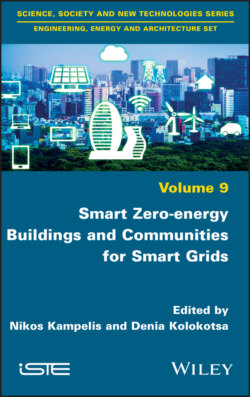Читать книгу Smart Zero-energy Buildings and Communities for Smart Grids - Группа авторов - Страница 14
1.1.1. Smart metering
ОглавлениеSmart metering is a prerequisite and starting point for the effective implementation of smart grids and zero-energy buildings. In Finland, the usage of smart metering encouraged consumers to increase energy efficiency by 7%. In order for electricity providers to deliver intelligent services for customers, bidirectional metering interfaces should be used to obtain customers’ energy demand information (Bae 2014). Moreover, through the advances of smart metering, sensors-based approaches can be exploited to provide power load forecasting (Jain et al. 2014). Data collected from smart meters, building management systems and weather stations can be used by advanced artificial intelligent techniques and machine learning algorithms to infer the complex relationships between energy consumption and various variables such as temperature, solar radiation, time of day and occupancy (Mellit and Pavan 2010; Gobakis et al. 2011; Zhao and Magoulès 2012; Jain et al. 2014; Jetcheva et al. 2014; Papantoniou et al. 2016). Due to the fast development and application of low cost options for energy metering in recent years, power load prediction is becoming increasingly relevant and cost effective (Fan 2014; Jain et al. 2014).
Smart metering with sensor-based approaches was exploited in the framework of the Green@Hospital project (www.greenhospital-project.eu/). In this project, the outdoor temperatures and hospitals’ energy demand were predicted for 4, 8, 12 and 24 hours ahead (Papantoniou et al. 2015). This prediction is then used for optimal control of the hospitals’ air handling units, leading to an almost 20% reduction of the energy used. Other researchers exploit neural networks’ capabilities for 24 h-ahead building-level electricity load forecasting, using data collected from various operational commercial and industrial building sites (Jetcheva 2014). Data mining-based approaches which collate models for predicting next-day energy consumption and peak power demand, with the aim of improving the prediction accuracy, are also developed. This approach was adopted to analyze the large energy consumption data of the tallest building in Hong Kong (Fan 2014) with very satisfactory results. These ensemble models can be valuable tools for developing strategies of fault detection and diagnosis, operation optimization and interactions between buildings and smart grids. Moreover, data processing and interpretations extracted by the smart meter can provide useful information for the buildings’ energy behavior. Advanced techniques such as cluster analysis are used by various researchers (Nikolaou et al. 2012; Panapakidis 2014), leading to the determination of optimum clustering procedures as well as building benchmarking.
